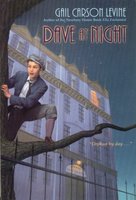
Far from 6th grade ss scope and sequence, but who cares at this stage, I tried to work in a combined Zorro history/literacy/tech lesson with the largely Spanish ELL learner's in Ms. Diaz's class. I used the 1940 movie previously mentioned and did an activity where they used a word template to explain some of the spanish expressions used in the movie dialogue. Here's some info on the real Zorro and Isabel Allende's recent book on the tale: "The recent release of a new Zorro movie has rekindled interest in the masked freedom fighter of colonial Mexico. Stars of the big screen Antonio Banderas and Sir Anthony Hopkins are the central characters of the hit film “The Mask of Zorro,” but behind the mask of the real Zorro was an Irish Soldier of Fortune, a native of Wexford. The masked hero and freedom fighter “Zorro” was the creation of Johnson McCulley, and first appeared in August 1919 as a serial in a pulp fiction journal entitled All-Story Weekly. Originally featured as a 5-part tale entitled “The Curse of Capistrano,” numerous pulp fiction magazines carried the various tales of Zorro between 1922 and 1959, including Argosy, West, Short Stories for Men and Cavalier Classics. Historically, whenever and wherever oppression exists, the people who are subject to it look for a heroic figure to defend them and to punish their persecutors. Such a paladin was Robin Hood, another is the legendary Zorro. One of my favorite authors, Isabel Allende, has reached deep into her ample well of talent and brought forth a hero who is more human than demigod. She has breathed fresh life into the Zorro of myth, and gifted him with a heart, a soul, a good mind, an indomitable spirit and human fallibilities. This beautifully told tale of adventure and classical romance is chock-full of swashbuckling swordplay, ocean voyages, pirate attacks, Native American lore and rites, detailed fencing episodes, social injustice, secret underground societies, evil villains, duels at dawn, damsels in distress, unrequited love, gypsy camps, noble drawing rooms, drama, rollicking humor, vivid characters, tremendous energy...and so much more."
























